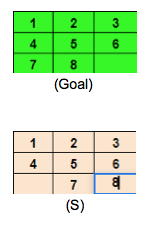NPTEL An Introduction to Artificial Intelligence Assignment 2 Answers 2022:- All the Answers provided here to help the students as a reference, You must submit your assignment at your own knowledge.
What is An Introduction to Artificial Intelligence?
An Introduction to Artificial Intelligence by IIT Delhi course introduces the variety of concepts in the field of artificial intelligence. It discusses the philosophy of AI, and how to model a new problem as an AI problem. It describes a variety of models such as search, logic, Bayes nets, and MDPs, which can be used to model a new problem. It also teaches many first algorithms to solve each formulation. The course prepares a student to take a variety of focused, advanced courses in various subfields of AI.
CRITERIA TO GET A CERTIFICATE
Average assignment score = 25% of the average of best 8 assignments out of the total 12 assignments given in the course.
Exam score = 75% of the proctored certification exam score out of 100
Final score = Average assignment score + Exam score
YOU WILL BE ELIGIBLE FOR A CERTIFICATE ONLY IF THE AVERAGE ASSIGNMENT SCORE >=10/25 AND EXAM SCORE >= 30/75. If one of the 2 criteria is not met, you will not get the certificate even if the Final score >= 40/100.
| An Introduction to Artificial Intelligence | Answers |
| Assignment 1 | Click Here |
| Assignment 2 | Click Here |
| Assignment 3 | Click Here |
| Assignment 4 | Click Here |
| Assignment 5 | NA |
| Assignment 6 | NA |
| Assignment 7 | NA |
| Assignment 8 | NA |
| Assignment 9 | NA |
| Assignment 10 | NA |
| Assignment 11 | NA |
| Assignment 12 | NA |
NPTEL An Introduction to Artificial Intelligence Assignment 2 Answers 2022:-
Q1. Suppose we are playing a game where there is one goal state and each step has a cost in the range [1,100]. Now, we wish to find the optimal path starting from the initial state. Which of the following search algorithms are guaranteed to be optimal?
(A) Breadth First Search
(B) Uniform Cost Search
(C) Iterative Deepening Search
(D) Bidirectional Uniform Cost Search
Answer:- (B) & (D)
For Next Week Assignment Answers
Q2. Suppose that there are two nodes u and v in a graph. We find two paths connecting the two nodes using bfs and dfs. What can be said about the length of the two paths returned by bfs and dfs?
(A) Path returned by bfs will always be shorter than that returned by dfs
(B) Path returned by dfs will always be shorter than that returned by bfs
(C) Both algorithms will always return the same path
(D) Path returned by bfs will never be longer than that returned by dfs
Answer:- (D) Path returned by bfs will never be longer than that returned by dfs
Q3. Suppose we implement a new algorithm, Geometric Iterative Deepening Search (GIDS), where we increase depths as 1,2,4,8.. instead of the standard 1,2,3,4.. in Iterative Deepening Search (IDS). Which of the following is true about GIDS, when run on a graph where each edge costs 1?
(A) It is complete but not optimal
(B) It is neither complete nor optimal
(C) It is complete and optimal
(D) It has worse time complexity than IDS in the worst case
(E) It can expand fewer nodes than IDS in some cases
Answer:- (A), (D) & (E)
Q4. Which of the following options is correct for Graph Search (with full duplicate detection)? (d is the depth of the shallowest goal and m is the max depth)
(A) Time and Space Complexity of BFS are O(bd) and O(bd) respectively
(B) Time and Space Complexity of BFS are O(bd) and O(bd) respectively
(C) Time and Space Complexity of DFS are O(bm) and O(bm) respectively
(D) Time and Space Complexity of DFS are O(bm) and O(bm) respectively
Answer:- (B) & (D)
For Question 5 and 6 –
Consider the following graph.

(Note: Duplicate Nodes are not expanded) (Write the answer as a capitalized string with no spaces. For example, if the order of exploration is A followed by B followed by C followed by D then write ABCD)
Q5. A is the initial state and we always pick the lexicographically smallest state in case of a tie. If the goal state is L, find the order of exploration of states in BFS?
Answer:- ABCDEFGHIJKL
Q6. A is the initial state and we always pick the lexicographically smallest state in case of a tie. If the goal state is L, find the order of exploration of states in UCS?
Answer:- ADBGCFHJEKIL
Q7. Now in the previous question consider that I perform the vanilla tree search UCS in the same setting but with goal state K. (without duplicate deletion). Write the sequence of the nodes that are visited. Assume ties are broken by lexicographical order. We stop as soon as we visit the goal state K.
Answer:- ADBGCFGHJEFK
Q8. The following three questions will be on the 8-puzzle game as discussed in the lectures. Assume that the configuration below is the goal state, and the state below to be some state S

What is the maximum number of new states (also called branching factor) which can be generated from any state of the 8-puzzle?
(A) 2
(B) 3
(C) 4
(D) 5
Answer:- (C) 4
For Next Week Assignment Answers
Q9. Consider running the BFS algorithm on the state S to find the goal state. What is the maximum number of unique states (including S) that can be visited by the algorithm before reaching the goal?
(A) 4
(B) 6
(C) 8
(D) 10
Answer:- (B) 6
Q10. What are some drawbacks of Bi-directional Search algorithm with respect to other search algorithms like BFS, and DFS?
(A) It takes more time in general.
(B) It consumes more memory in general.
(C) It is necessary to know the goal state beforehand.
(D) It is necessary to be able to search ‘backwards’, i.e know the predecessors of any state
Answer:- (C) & (D)
Q11. n a graph where the goal is neither the root, nor at depth one, Iterative deepening search will definitely expand _____ nodes than breadth-first search.
(A) More
(B) Less
(C) Equal Number
(D) Cannot say
Answer:- (A) More
Disclaimer:- We do not claim 100% surety of solutions, these solutions are based on our sole expertise, and by using posting these answers we are simply looking to help students as a reference, so we urge do your assignment on your own.
For More NPTEL Answers:- CLICK HERE
Join Our Telegram:- CLICK HERE
NPTEL An Introduction to Artificial Intelligence Assignment 2 Answers 2022:- All the Answers provided here to help the students as a reference, You must submit your assignment at your own knowledge.

5 thoughts on “NPTEL An Introduction to Artificial Intelligence Assignment 2 Answers”